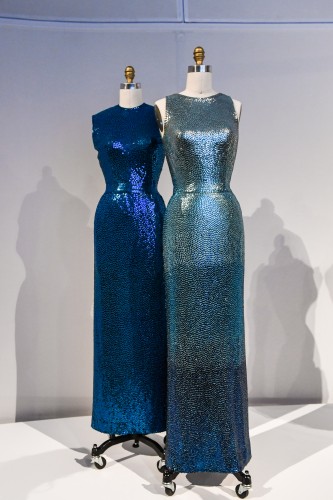“The mediator between the head and the hand must be the heart.” So goes one of the most memorable quotes from Fritz Lang’s 1927 masterpiece “Metropolis,” which riffs on a futuristic city made of man and machine.
Seeing “Manus x Machina: Fashion in an Age of Technology,” one could not help but think of just how relevant this idea has been to fashion—a field where the heart of the designer firmly steers the balance of manmade and machine-made in the exquisite garments on display.
Previewed at The Met Fifth Avenue on Monday morning, the exhibition features a significant amount of Dior and Chanel, as well as many other works by European designers and houses, yet the number of American fashion is noteworthy. Among the highlights: a machine-sewn black silk chiffon dress by designed by Proenza Schouler’s Jack McCollough and Lazaro Hernandez, which the duo embroidered with silver plastic paillettes to resemble the texture of astrakhan.
“Traditionally, the distinction between Haute Couture and Pret A Poter has always been between the handmade and the machine-made, respectively,” said curator in charge Andrew Bolton. “Manus x Machina questions the dialectal relationship between the hand and the machine.”
The exhibition makes the point that the handmade and the machine-made can coexist, and come together to solve design problems, enhance design and push creativity. Case in point: the crinkle organza dress Marc Jacobs created for Louis Vuitton, which was hand-embroidered with laser-cut plastic flowers, crystal and metal studs, and machine-made broderie anglaise flowers.
Halston, Norman Norell, Charles James, and a trio of stunning, pleated Mary McFadden “Marii” numbers round out the American presence (McFadden was also president of the CFDA from 1982-1983).
The exhibition, which is open to the public May 5-August 14, is made possible by Apple, which is proving to be a kindred partner, according to Apple’s Chief Design Officer Jony Ive.
“With a father who is a fabulous craftsman, I was raised with the fundamental belief that it is only when you personally work with the material with your hand, that you come to understand its true nature, its characteristics, its attributes and, very importantly, it’s potential,” Ive remarked.
“Many of us [at Apple] believe in the poetic possibilities of the machine, while in equal measure, we have tremendous respect and admiration for what is made by the hand,” he said. “Our goal has always been to try and create objects that are as beautiful as they are functional, as elegant as they are useful.”



